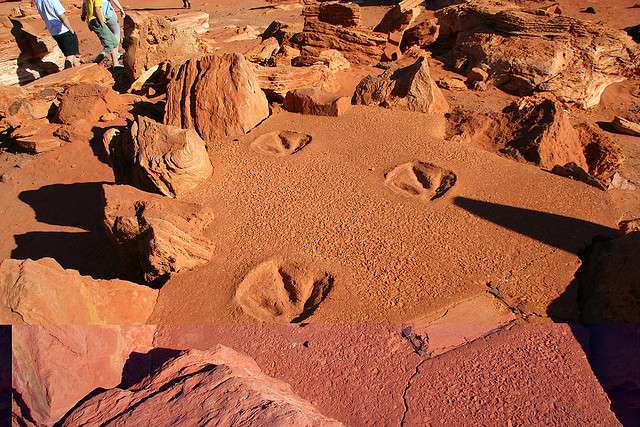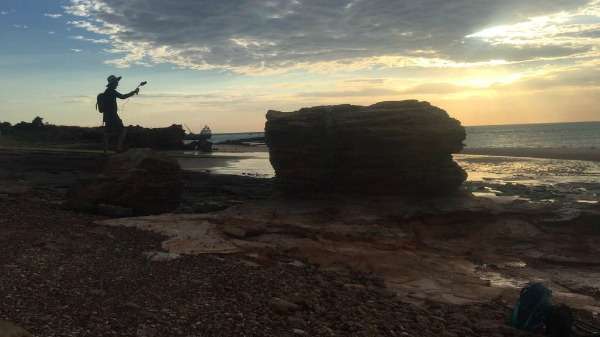Rare tidal movements expose Kimberley dinosaur tracks

While audiences in Perth attend Walking with Dinosaurs this weekend palaeontologists working near Broome will be documenting the extinct vertebrates' extensive fossilised footsteps using laser scanning technology.
The researchers are using the hand-held scanner Zebedee to help build three-dimensional images of the prints, as part of the government-funded Walking with Dinosaurs in the Kimberley project.
Queensland University senior lecturer Steven Salisbury is leading the project.
He returned to Broome this week, to take advantage of massive tides (up to 12m) at this time of year which expose tracks on rock platforms which are mostly underwater.
He says it is an intense period of research, trying to gather as much data as possible at low tide for interpretation back in the laboratory.
Dr Salisbury says some areas are exposed just a few hours, a few days of the year.
"So we don't get many chances," he says.
"At one time in the past, you'd have been able to lay out some tape measures and transect line and using some graph paper go about casually recording it but we can't do that here because we'd be washed away."
Previous expeditions have used on-ground and aerial photography from drones and aircraft and photogrammetry to build-up 3D images but it is the first time Zebedee has been deployed.
It is a lightweight LiDAR laser scanner developed by CSIRO that fires lasers into the atmosphere from a spinning mirror. Distance is measured when the lasers bounce back.

The scanner earned its name from the spring-loaded children's TV character Zebedee from The Magic Roundabout.
Dr Salisbury says Zebedee is better suited to 3D spaces like caves and its use on flat terrain has needed some modifications.
However, the results are very exciting.
"The more you do it, the bigger the three dimensional point cloud and you can build-up a three-dimensional terrain," he says
"What we are doing now is trying to overlay the three dimensional photographs into that terrain.
"We obviously have a lot of processing and cataloguing to do back at the uni but already we are able to do a lot of work with what we've got.
"Two student on the team are working on interpreting one of the nice sauropod track site close to Broome which we haven't been able to do previously because it's too tricky with tides and the extent of the track sites.
Dr Salisbury says the Kimberley has the only example of Australian dinosaurs, up to 20 different types, from 130 million years ago.
Provided by Science Network WA




















